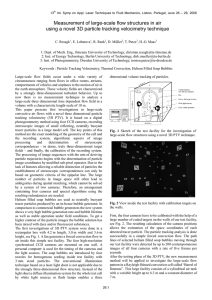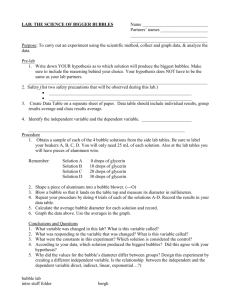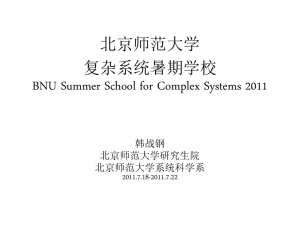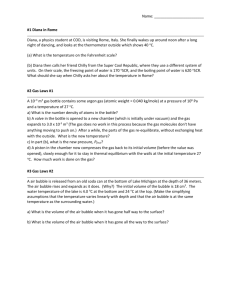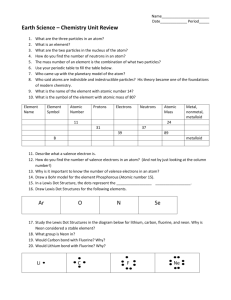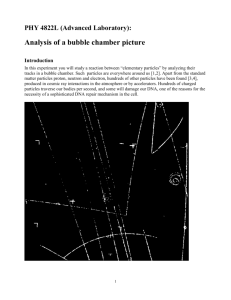instructions to authors for the preparation - The Gibson Group
advertisement
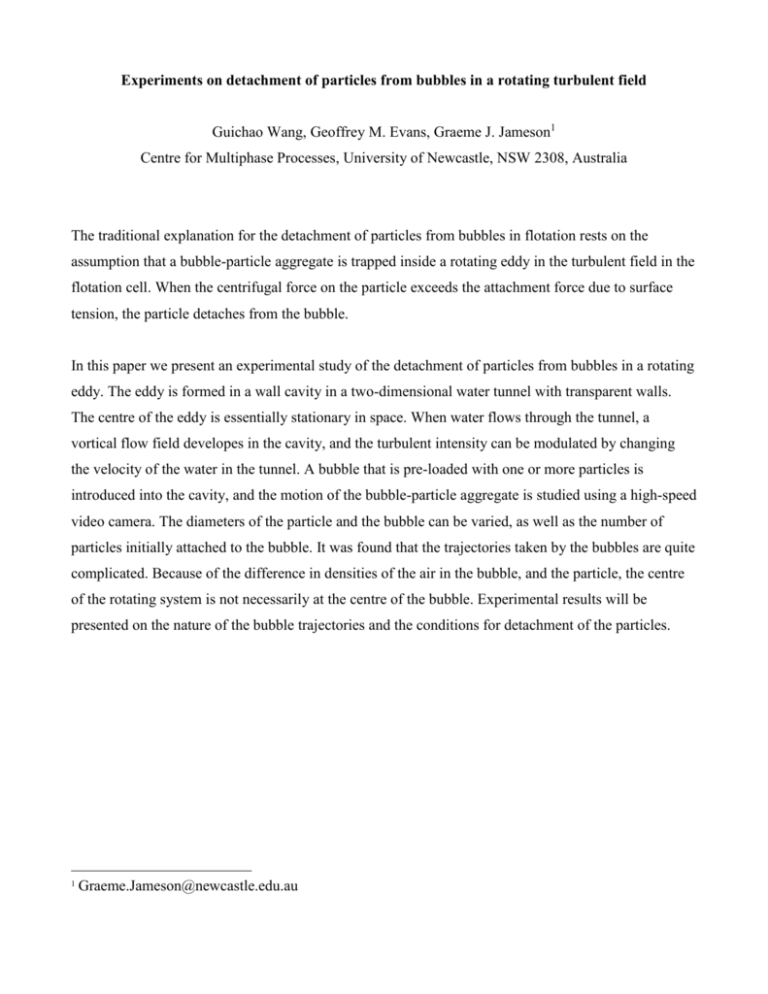
Experiments on detachment of particles from bubbles in a rotating turbulent field Guichao Wang, Geoffrey M. Evans, Graeme J. Jameson1 Centre for Multiphase Processes, University of Newcastle, NSW 2308, Australia The traditional explanation for the detachment of particles from bubbles in flotation rests on the assumption that a bubble-particle aggregate is trapped inside a rotating eddy in the turbulent field in the flotation cell. When the centrifugal force on the particle exceeds the attachment force due to surface tension, the particle detaches from the bubble. In this paper we present an experimental study of the detachment of particles from bubbles in a rotating eddy. The eddy is formed in a wall cavity in a two-dimensional water tunnel with transparent walls. The centre of the eddy is essentially stationary in space. When water flows through the tunnel, a vortical flow field developes in the cavity, and the turbulent intensity can be modulated by changing the velocity of the water in the tunnel. A bubble that is pre-loaded with one or more particles is introduced into the cavity, and the motion of the bubble-particle aggregate is studied using a high-speed video camera. The diameters of the particle and the bubble can be varied, as well as the number of particles initially attached to the bubble. It was found that the trajectories taken by the bubbles are quite complicated. Because of the difference in densities of the air in the bubble, and the particle, the centre of the rotating system is not necessarily at the centre of the bubble. Experimental results will be presented on the nature of the bubble trajectories and the conditions for detachment of the particles. 1 Graeme.Jameson@newcastle.edu.au

